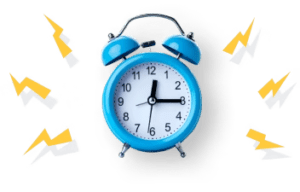Name
Capella University
FPX6416
Instructor’s Name
October 05, 2024
Table of Contents
ToggleTechnology Needs Assessment Summary and Implementation Plan
In modern healthcare systems, the integration of advanced technology is crucial for delivering high-quality care and improving operational workflows. A Technology Needs The implementation of the latest technology is an inevitable part of the contemporary healthcare facilities to achieve quality care and efficient organizational processes. The purpose of a Technology Needs Assessment is to pinpoint inefficiencies in existing processes and determine the places where new technologies can create value (Bélisle et al., 2021). A good Implementation Plan guarantees that such technological improvements are implemented effectively with little or no inconvenience caused to both the patients and healthcare givers.
Innovation Evaluation Rundown and Execution Plan Presentation
Contemporary healthcare systems can be considered to be driven by innovation as a competitive factor defining both the results of patient care and the financial results of healthcare facilities (Tevik et al., 2023). As discussed, the phenomenal growth in technological solutions exerts pressure on healthcare systems to improve patient demands, clinical operations, and healthcare costs. In this presentation, a need to embrace innovative information systems in hospitals requires change management strategies, highlights critical changes, and shares a needs assessment meeting with healthcare professionals (Tevik et al., 2023).gies can drive improvements (Bélisle et al., 2021). A well-structured Implementation Plan ensures that these technological enhancements are introduced efficiently, minimizing disruption while maximizing the benefits to both patients and healthcare providers.
Advantages to Patient Wellbeing and Healthcare Outcomes
Cardiovascular Care and Remote Patient Monitoring (RPM)
From the information gathered, RPM has emerged as an important technology for managing patients especially those with chronic ailments like heart failure. Heart failure touches about 5.8 million Americans it is one of the leading causes of hospital readmission and has significant costs (Peters et al., 2022). Lack of good follow-up is when patients develop more complications that get them back to the hospitals thus worsening the already frail system. The preventive method that RPM has is the administration of preventive care through close monitoring of patient status from home as a check on complications caused by chronic diseases. Not only does it enhance the patient’s quality of life but also it also decreases the frequency of, hospitalization days and, and the rate of reappearance for further treatment.
Role of Patient Portals
While RPM is all about the regular exchange of health data between patients and providers, patient portals serve as a shared communication and data management interface. They enable patients to review his or her information, check lab test results, request prescription renewals, and book appointments (Palmer et al., 2019). Portals effectively increase patients’ knowledge and make them feel responsible for their treatment. In addition, the patient-physician relationship established through these platforms creates understanding, reduces misrepresentation, and increases the level of compliance with recommended treatments. The increase in value offered by engaging these providers improves the clinical quality and overall satisfaction of patients.
Hierarchical Data Systems Changes
Needs Assessment Findings
This work was informed by the needs assessment meeting wherein nurses, physicians, and other healthcare staff at VilaWellbeing recognized the current information system’s inability to address the needs of post-discharge care of patients with chronic conditions such as diabetes (Palmer et al., 2019). Most of the nurses said that it was difficult for them to closely follow up patients once they are discharged from the hospital since delay could see such conditions go unnoticed until they reach life-threatening levels. Furthermore, participants stated that there was considerable disorganization with patient records and arranging successive appointments which created issues with non-integrated healthcare.
Adoption of Remote Monitoring
As a solution to these challenges, the need to adopt remote patient monitoring technology was established as the key next step. This innovation will help nurses and other caregivers to monitor patient health parameters such as glucose levels and blood pressure from points of comfort and then intervene appropriately whenever such parameters have risen to dangerous levels (Øvrebø et al., 2022). Patient portals serve this function further to support these efforts through enhancing patient-provider relations and enabling the patient easier access to important health information to remain actively involved in their care. These technologies will supplement one another to greatly enhance overall care experience, and ultimately decrease readmissions to the hospital and chronic patient’s overall health.
Comprehensive Project Management Execution Plan
Objectives and Key Milestones
The main goal of the project is to integrate both remote patient monitoring equipment and patient-friendly patient portals into VilaWellbeing’s health system. Dykes et al. (2020) note specific aims to include optimized post-discharge patient management, lowered readmission rates, increased staff efficiency, and engaged patients. These include; the implementation of RPM devices, the launching of the patient portal, as well as staff training on usage of the tools. Third, understanding and patient education regarding the use of these portals will also be a vital factor in the realization of this growth and utilization.
Measurable Success Indicators
Several key indicators will measure the success of this project: These outcomes include a lower readmission rate to a hospital, higher patient satisfaction ratings, better clinical results like control of certain ailments, and more patient involvement exposed by the patient portal system (Lin et al., 2020). Health, physical education and sports goals, objectives, indicators, and data collection and analysis will occur at least once per term to determine if targets are being achieved. Sustained assessment will mean constant input adjustments and optimization throughout the project implementation to address any concerns.
Stakeholders Involvement
Stakeholders consist of IT, nurse informatics, VilaWellbeing management, nurses, physicians, and other healthcare personnel. The IT department will have the installation of the new technologies while the nurse informaticists will act as a link between the technical side and clinical side of the organization to ensure that the technologies implemented are functional for use in practice settings by nurses and other healthcare workers (Davino et al., 2022). VilaWellbeing’s leadership will be involved in managing the project and providing the necessary support and VilaWellbeing’s nurses and healthcare workers will directly be applying the technologies on observation and interaction with the patients.
Timeline for Implementation
The developmental phase of the project is anticipated to take approximately six months to complete. The IT team will allocate the first 2 months to designing the framework and develop the subsequent 10 months to staff training and system implementation for patients (Davino et al., 2022). Though HCBs will undergo a three-month training program, actual patients will only be allowed to interact with the new technologies during the trial phase in which they will also be instructed on how to go about using the technologies. Large-scale training will be carried out after this trial phase with subsequent ongoing checks if the developed systems are operating optimally.
Relevant Change Management Strategies
Kurt Lewin’s Three-Step Model
The implementation of technological tools, RPM, and patient portals will not be an exception because I will use the three-step change management model proposed by Kurt Lewin. This model provides a structured approach to facilitating organizational transformation: The first action entails a process of making VilaWellbeing staff and leadership ready for the upcoming changes (Schweighart et al., 2022). This means advocating for RPM and patient portals, dispelling misconceptions, and garnering support for the project. In the second step, the new technologies themselves will be introduced. This phase involves defining the technical details of the entire process, training personnel, and educating the patient. In this stage, among other things, there is a need to prevent and counter any resistance that might be experienced during the transition phase (Mason, et al., 2022). In the second step, the new technologies will be implemented. This phase includes the technical setup, staff training, and patient education. It is critical during this phase to provide support and resources to ensure a smooth transition and mitigate any resistance (Mason, et al., 2022). In the end, the control phase needs to be applied to perpetuate the changes in the organization through the newly introduced technologies. This includes follow-up of the newly introduced practices to ascertain that members are using the above systems to the optimum.
NURS FPX 6416 Assessment 2 Conclusion
The implementation of RPM solutions and patient portals into VilaWellbeing’s healthcare system is beneficial since it provides several valuable benefits that help the outcome of high-quality, cost-efficient medical care (Peltoniemi et al., 2021). Advanced technologies in the post-discharge patient experience enhance patient care by providing relevant patient tracking and more efficient patient-clinician interactions that lead to fewer hospital readmissions and overall improved patient satisfaction. It is forecasted that project cooperation between IT specialists, clinical staff, and Nurse Informatics specialists will guarantee this technological development’s proper implementation and significant results. All of these innovations consequently help fulfill VilaWellbeing’s goal of delivering the best healthcare services it can while remaining fiscally responsible.
NURS FPX 6416 Assessment 2 References
Bélisle, J. C., Couture, V., Roy, M. C., Ganache, I., Goetghebeur, M., & Cohen, I. G. (2021). What makes artificial intelligence exceptional in health technology assessment? Frontiers in Artificial Intelligence, 4, 736697. https://doi.org/10.3389/frai.2021.736697
Dykes, P. C., Burns, Z., Adelman, J., Benneyan, J., Bogaisky, M., Carter, E., Ergai, A., Lindros, M. E., Lipsitz, S. R., Scanlan, M., Shaykevich, S., & Bates, D. W. (2020). Evaluation of a patient-centered fall-prevention tool kit to reduce falls and injuries: A nonrandomized controlled trial. JAMA Network Open, 3(11), e2025889. https://doi.org/10.1001/jamanetworkopen.2020.25889
Davino, T., Van Hoof, T. J., Elwell, J., & DeLayo, M. (2022). Educational needs assessment identifying opportunities to improve sepsis care. BMJ Open Quality, 11(4), e001930. https://doi.org/10.1136/bmjoq-2022-001930
Lin, H., Ye, M., Chan, S. W., Zhu, J., & He, H. (2020). The effectiveness of online interventions for patients with gynecological cancer: An integrative review. Gynecologic Oncology, 158(1), 143–152. https://doi.org/10.1016/j.ygyno.2020.04.690
Mason, M., Cho, Y., Rayo, J., Gong, Y., Harris, M., & Jiang, Y. (2022). Technologies for medication adherence monitoring and technology assessment criteria: Narrative review. JMIR Health and Health, 10(3), e35157. https://doi.org/10.2196/35157
Øvrebø, L. J., Dyrstad, D. N., & Hansen, B. S. (2022). Assessment methods and tools to evaluate postgraduate critical care nursing students’ competence in clinical placement. An integrative review. Nurse Education in Practice, 58, 103258. https://doi.org/10.1016/j.nepr.2021.103258
Peters, S., Sukumar, K., Blanchard, S., Ramasamy, A., Malinowski, J., Ginex, P., Senerth, E., Corremans, M., Munn, Z., Kredo, T., Remon, L. P., Ngeh, E., Kalman, L., Alhabib, S., Amer, Y. S., & Gagliardi, A. (2022). Trends in guideline implementation: An updated scoping review. Implementation Science: IS, 17(1), 50. https://doi.org/10.1186/s13012-022-01223-6
Palmer, J. A., Parker, V. A., Barre, L. R., Mor, V., Volandes, A. E., Belanger, E., Loomer, L., McCreedy, E., & Mitchell, S. L. (2019). Understanding implementation fidelity in a pragmatic randomized clinical trial in the nursing home setting: A mixed-methods examination. Trials, 20(1), 656. https://doi.org/10.1186/s13063-019-3725-5
Peltoniemi, O., Han, T., & Yun, J. (2021). Coping with large litters: management effects on welfare and nursing capacity of the sow. Journal of Animal Science and Technology, 63(2), 199–210. https://doi.org/10.5187/jast.2021.e46
Schweighart, R., O’Sullivan, J. L., Klemmt, M., Teti, A., & Neuderth, S. (2022). Wishes and needs of nursing home residents: A scoping review. Healthcare (Basel, Switzerland), 10(5), 854. https://doi.org/10.3390/healthcare10050854
Tevik, K., Helvik, A. S., Stensvik, G. T., Nordberg, M. S., & Nakrem, S. (2023). Nursing-sensitive quality indicators for quality improvement in Norwegian nursing homes. A modified Delphi study. BMC Health Services Research, 23(1), 1068. https://doi.org/10.1186/s12913-023-10088-4








